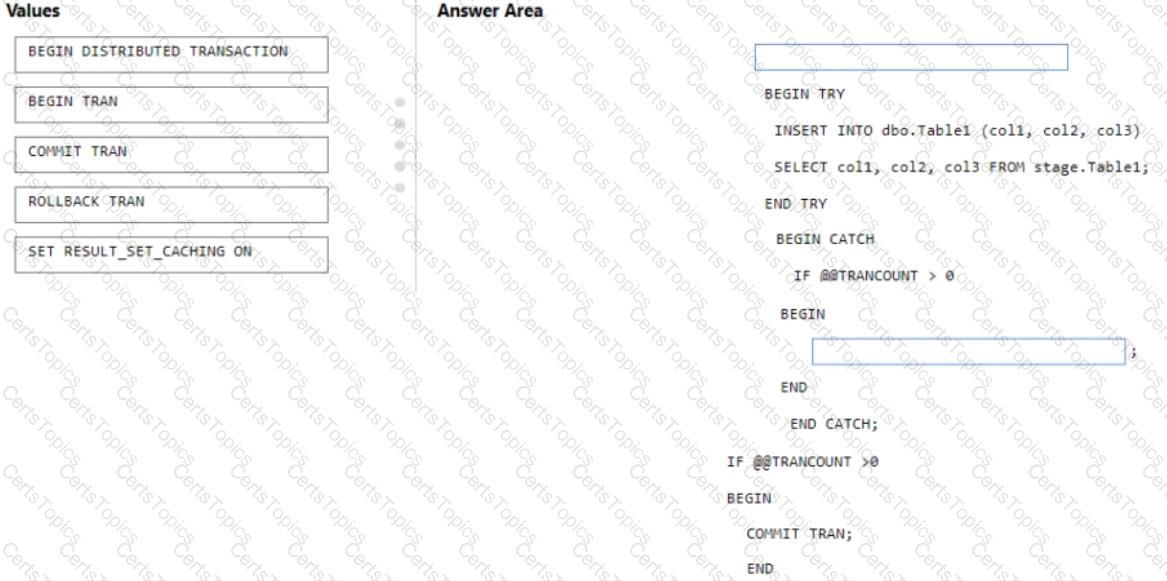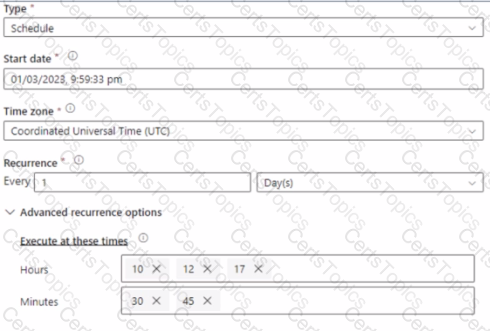You are batch loading a table in an Azure Synapse Analytics dedicated SQL pool.
You need to load data from a staging table to the target table. The solution must ensure that if an error occurs while loading the data to the target table, all the inserts in that batch are undone.
How should you complete the Transact-SQL code? To answer, drag the appropriate values to the correct targets. Each value may be used once, more than once, or not at all. You may need to drag the split bar between panes or scroll to view content.
NOTE Each correct selection is worth one point.

You have an Azure Synapse Analytics pipeline named pipeline1 that has concurrency set to 1.
To run pipeline 1, you create a new trigger as shown in the following exhibit.

Use the drop-down menus to select the answer choice that completes each statement based on the information presented in the [graphic.
NOTE: Each correct selection is worth one point.

that has the activity shown in the following exhibit.

Use the drop-down menus to select the answer choice that completes each statement based on the information presented in the graphic.

You are designing a data mart for the human resources (MR) department at your company. The data mart will contain information and employee transactions. From a source system you have a flat extract that has the following fields:
• EmployeeID
• FirstName
• LastName
• Recipient
• GrossArnount
• TransactionID
• GovernmentID
• NetAmountPaid
• TransactionDate
You need to design a start schema data model in an Azure Synapse analytics dedicated SQL pool for the data mart.
Which two tables should you create? Each Correct answer present part of the solution.